Tim Hellwig: season starting soon – Olympics in sight
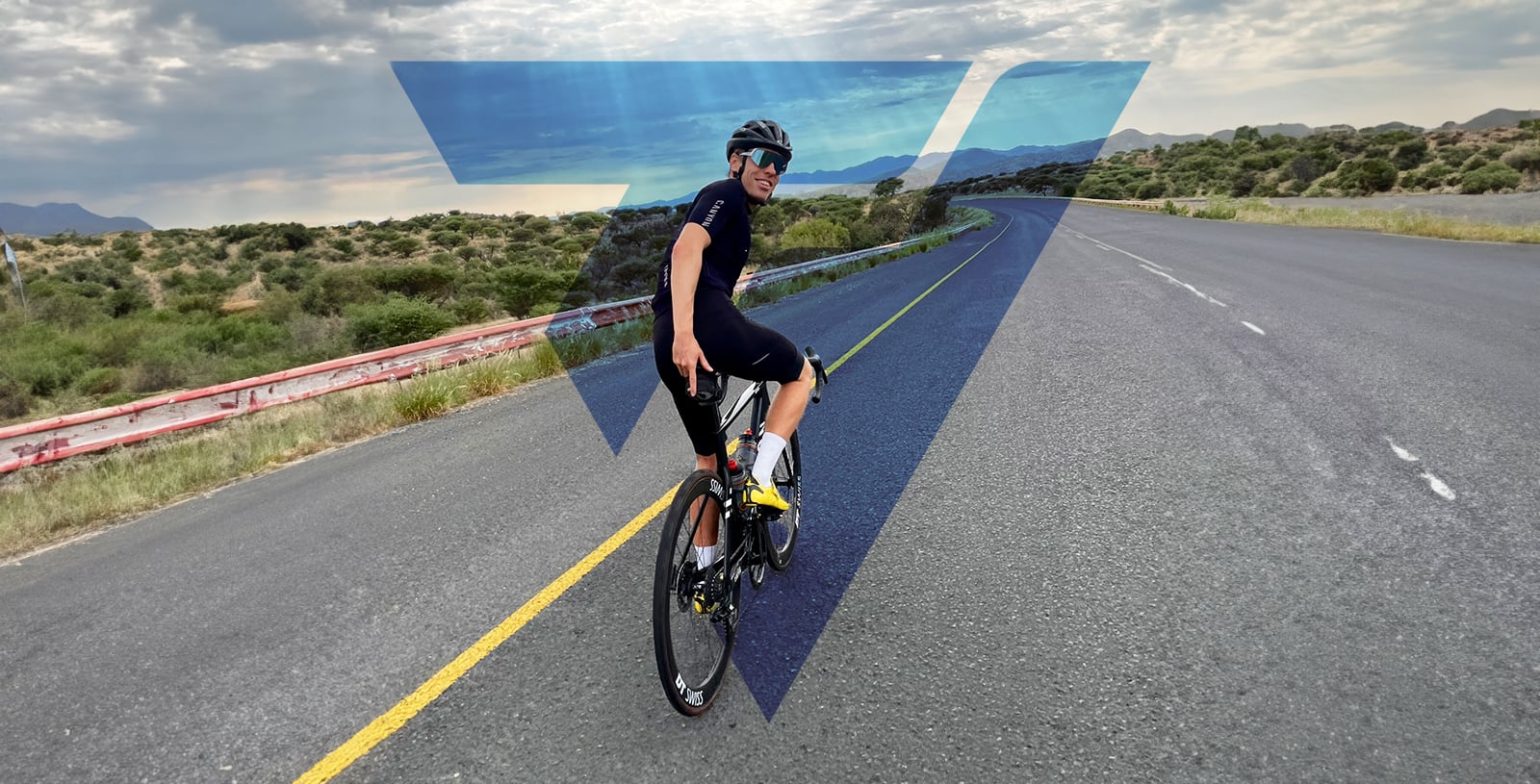
Straight from a four-week DTU training camp in Namibia, top triathlete Tim Hellwig travelled to Abu Dhabi for the start of the World Triathlon Championship Series (WTCS) on 8 and 9 March 2024. The opening of the season in the United Arab Emirates capital sees the 24-year-old triathlete from HYLO® Team Saar launching his 2024 Olympics mission – the highlight of the year in the French capital of Paris this summer.
Before we explore the Saarland triathlete’s future, we can start by taking a quick look back at last year’s strong, successful season, when Tim Hellwig was already laying the foundations for planning the 2024 Olympic year.
Thanks to early qualification for the 2024 Olympic Games following seventh place at the Olympic qualifier in Paris last August, Deutsche Triathlon Union (DTU) Olympic athlete Tim Hellwig can focus his full attentions and season planning activities on this major event in France. This was combined with second place at the WTCS Grand Final in Pontevedra (Spain) and two world cup wins in a row (Chengdu, China and Tongyeong, Korea) to round off the season, putting him in 15th place in the Individual Olympic Qualification Ranking and ultimately meeting the nomination criteria. Although official nomination by the DOSB does not come until the end of May, there is now nothing to prevent Tim Hellwig from competing at the Olympics.
Training camp to launch the Olympic season
Preparations for the 2024 Olympics began with an initial training camp in December of last year, on Fuerteventura in the Canary Islands. The two-week training course with just under twenty athletes from the elite DTU squad focused on basic training, with no high-intensity sessions yet.
Altitude training in Namibia
From 6 February to 5 March, Tim Hellwig was part of a fourteen-person DTU squad that completed a four-week altitude training camp in Namibia as a perfect way to prepare for the season. The training camp near the capital of Windhoek, 1600 metres above sea level, offers perfect conditions along with an ideal climate (average daily maximum temperature of 29 degrees). At this time of year, altitude training in Europe – e.g. in Spain (Sierra Nevada) or St. Moritz – would generally need to be completed indoors. Snow, rain and cold temperatures would significantly limit training options.

Training priorities and programme in Namibia
Threshold development, i.e. improving your aerobic and anaerobic threshold in order to increase endurance capacity, is a focus for all three disciplines – although without training too intensively, focusing on the highlight of the season at the end of July in Paris. The fast training sessions were less intensive than those completed at the camp in Fuerteventura. In Namibia, the athletes were working closer to the lactate threshold, and introduced some race-specific sessions. These included alternating cycle and run training, to get used to the change in exertion between the disciplines.
The training routine followed a set rhythm: three days of ‘exertion’ followed by a ‘rest day’. Athletes trained for four to six hours on exertion days and two to two and half hours on rest days. Tim Hellwig therefore trained for an average of 22 to 28 hours per week over the four-week camp. This was made up of around 20 to 25 km swimming, 300 to 350 km cycling and 50 to 60 km running. Another two hours a week were spent on strength and athletic training.
A sample day for the triathletes at the training camp would have looked like this: at 7 in the morning, three hours of cycling with climbing intervals, then breakfast at the lodge. Swimming at 12 p.m., 5 km with intervals, before cooking their own lunch. Then at 5 p.m., a running session for 1:15 hours. Finally dinner, e.g. in the capital city of Windhoek with a small group of other athletes.
What about free time? What else did Tim Hellwig do and see in Namibia?
With the intensive training sessions and the rest and regeneration periods these require, there was little time left over for athletes to explore the country and its people. The most popular leisure activity was going out for a meal together. Good restaurants offered a welcome change from the everyday training schedule. Windhoek has some excellent, affordable restaurants offering top-quality beef on a daily basis. Zebra, part of the country’s major game culture, is also served. However, this was not on Tim’s meal plan.
Cooking or barbecuing together as a group of four or six was also a regular occurrence. The DTU travel group were housed in a camp-like facility within individual bungalows and accommodation units that had their own small kitchen. This allowed the athletes to prepare their own breakfast before the first training session. A second breakfast was then eaten together in the travel lodge at 10:30 a.m. Omelettes, porridge and toast were all on the menu. At lunchtime, most people cooked for themselves – fried rice was a popular choice for Tim Hellwig. On rest days, the athletes also went to coffee shops or enjoyed shopping at the mall.
The four weeks in Namibia are now over, and in addition to training benefits and good preparations for a challenging season, Tim Hellwig has also come away with many wonderful memories of training amid this unique nature and landscape, where monkeys or giraffes crossing the road or watching from the roadside were an everyday part of cycle training.
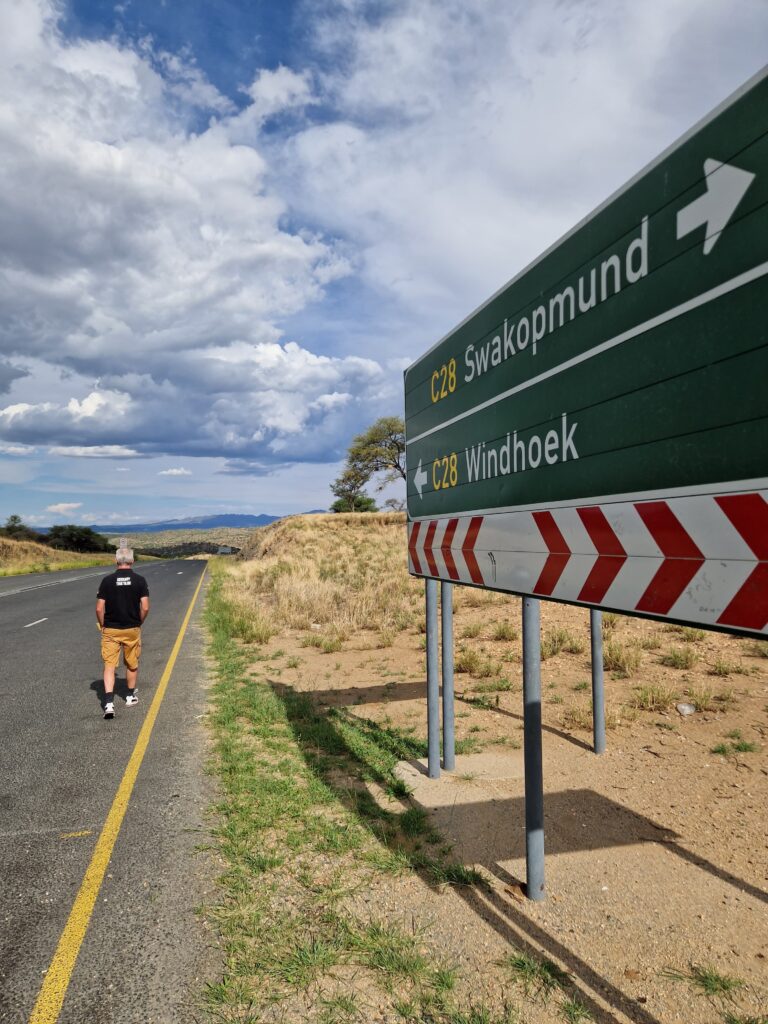

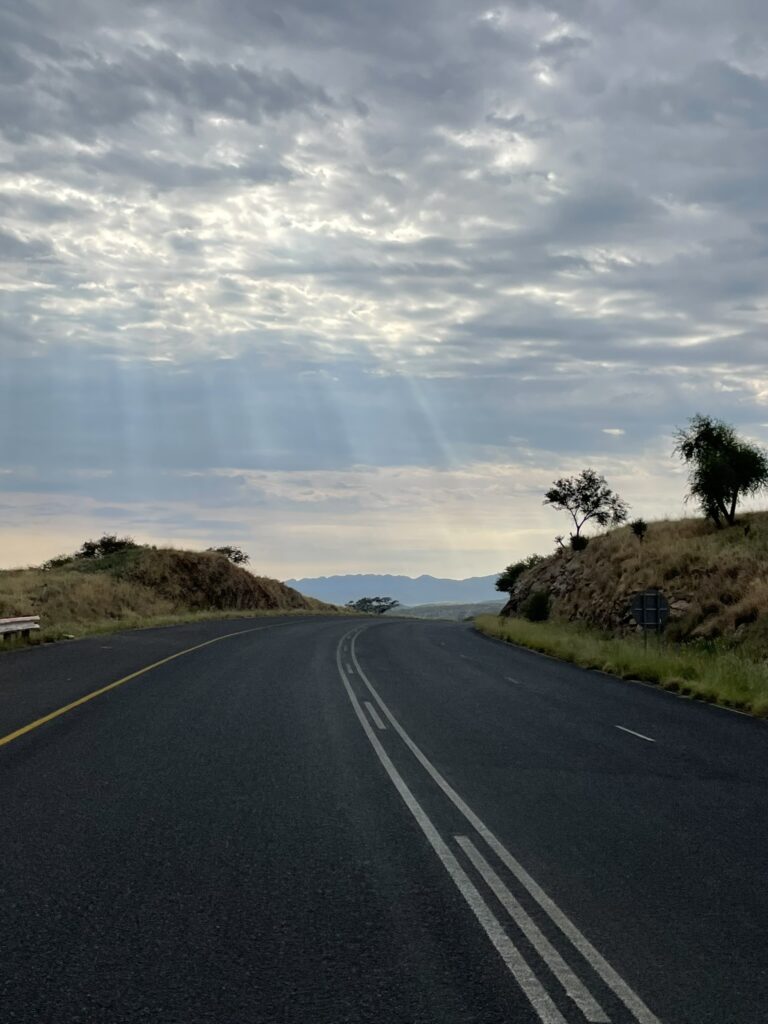
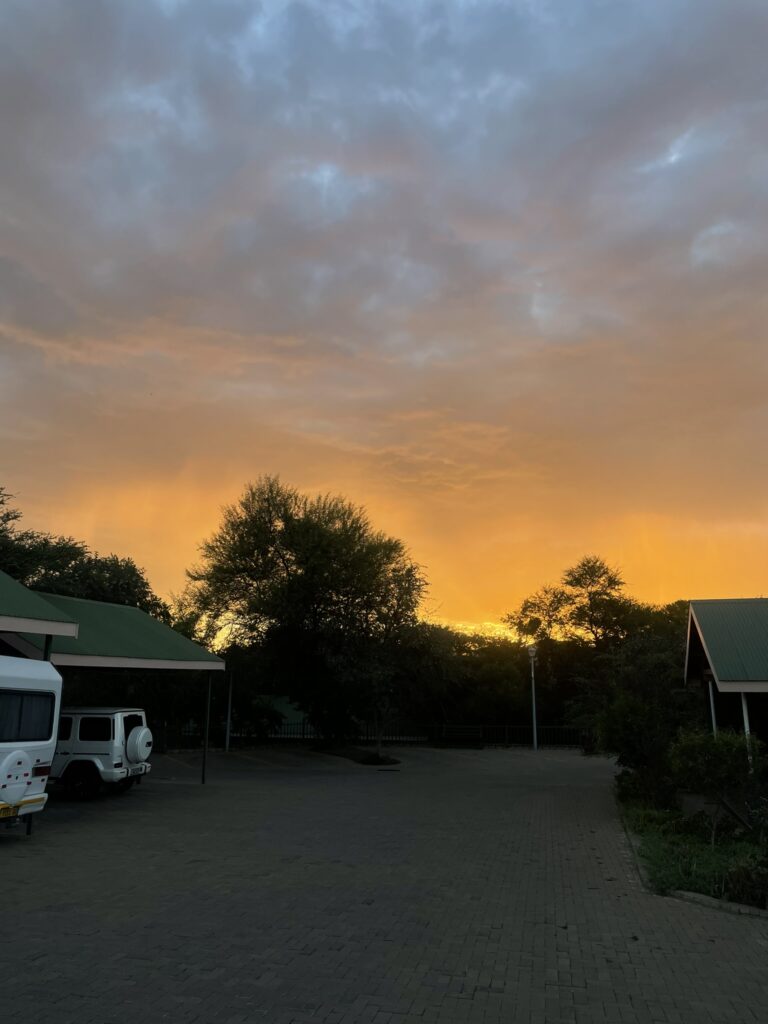
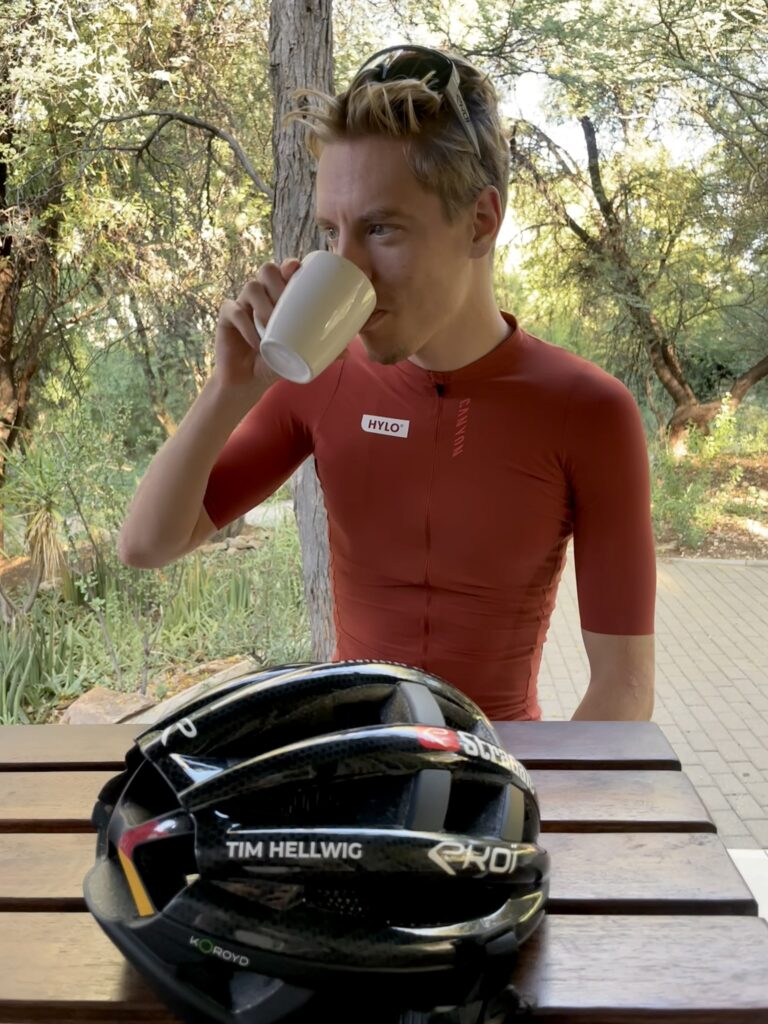
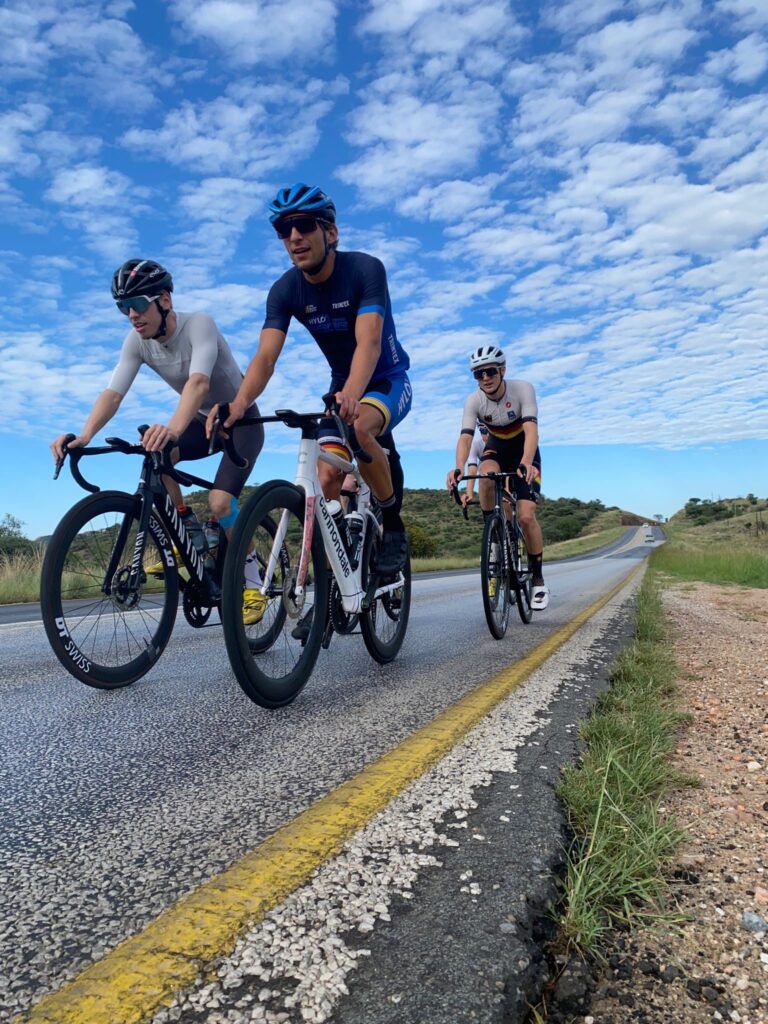
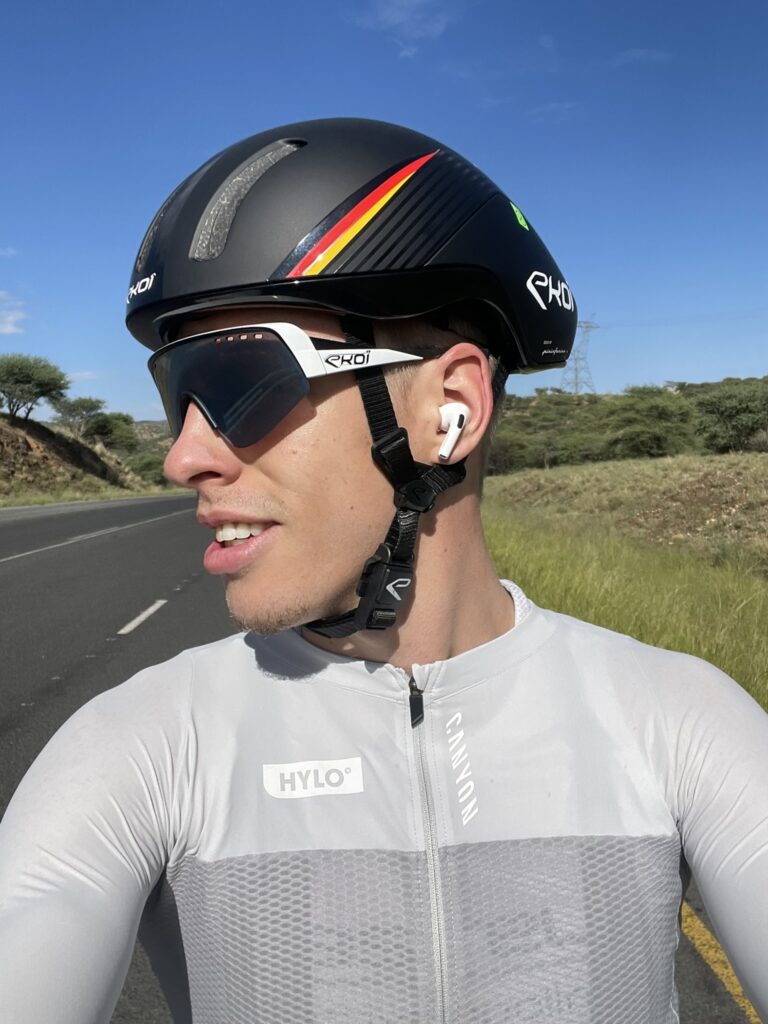
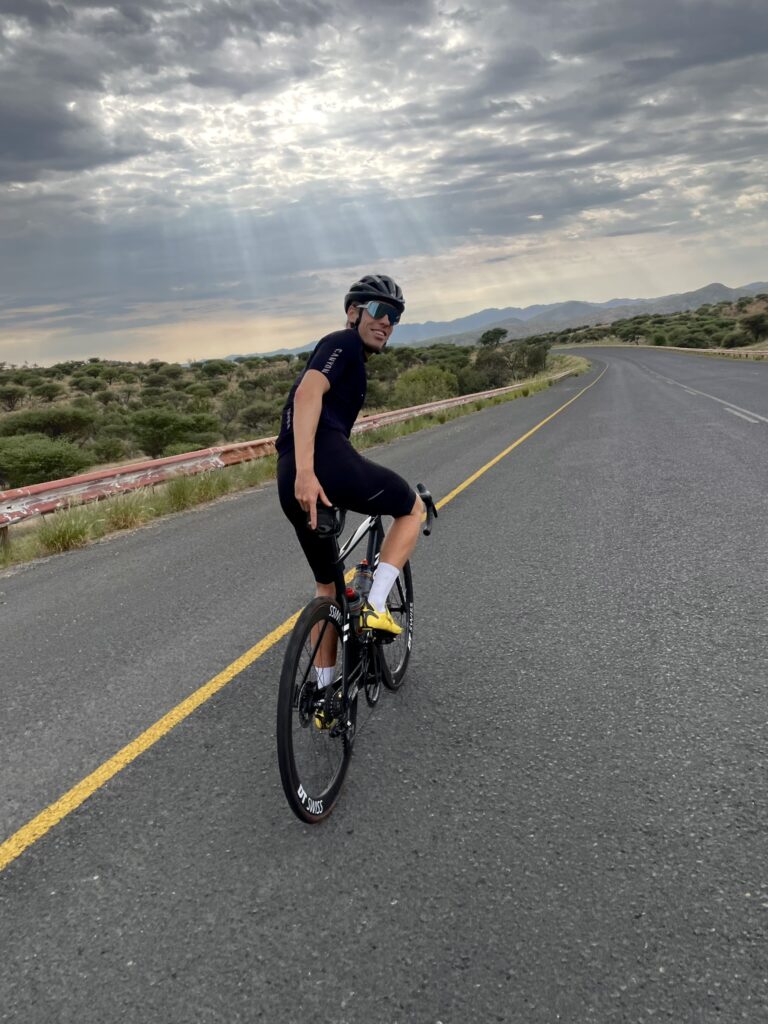
Starting the season on a Formula 1 track
After the Namibia training camp, Tim Hellwig is immediately continuing things in Abu Dhabi. On 8 and 9 March, the capital of the United Arab Emirates is hosting the first event of the World Triathlon Championship Series (WTCS) – the elite series for the triathlon, like a Champions League for footballers. The difference is that the title of World Triathlon Champion is awarded at the end of the series, after up to eight events. The competition uses the Olympic distance (1.5-km swim, 40-km cycle, 10-km run).
There are a few things that make this triathlon event in the Emirates special: firstly, a significant proportion of the race takes place on the Yas Marina Circuit, the Formula 1 track in Abu Dhabi. The cycling and running sections are primarily on the motorsport circuit, where the Formula 1 race has been held since 2009. It will be an evening race under floodlights, beginning at sunset – 6 p.m. local time – with the starting signal for the swim in the harbour basin. Then things head to the pit lane, which is serving as the transition area between the different disciplines. In what will likely still be 30-degree temperatures with high humidity, the athletes continue with the cycle ride and then a run down the runway – in the truest sense of the word.
The best triathletes in the world will be lining up on the start line. After his exceptional eighth place at the end of last year’s series, Tim is again one of the favourites to gain a top position this year. However, in an Olympic year this competition’s status is somewhat different to usual, falling below the ultimate goal of the Olympic Games.
Status check for Paris
For Tim Hellwig, the season opener in this desert state will serve as a status check for this Olympic year. After some very positive experiences with training and competition management last year, Tim Hellwig will be trying to similarly manage his performance curve this year, and selecting competitions that enable him to ideally peak at the Olympic Games in Paris on 30 July 2024 (the date of the men’s individual race).
As Tim has already secured qualification for Paris, he is not under so much pressure to compete at every event. He will therefore be tailoring his season calendar and competition entries based on his physical condition and timings, and continue adjusting them as he gets closer to the Olympics.
As it currently stands, after starting his season in Abu Dhabi, Tim is planning the following events before the highlight of the year in Paris:
- 30 March: World Triathlon Indoor Cup Lievin (France) – in a 25-metre indoor swimming pool created specially for the event, the best triathletes in the world test their skills over very short distances. The race takes place in front of 5,000 spectators, who will be entertained by a DJ and breathtaking shows. This is a rather different (and very fun) triathlon event, but also a good opportunity for Tim to measure up against what will most likely be his closest competitors for the Olympic Games in France.
- 4 May: Grand Prix de Triathlon Frejus (France) – Division 1 French club championship competition – once again featuring numerous top French athletes that the Saarland triathlete will face.
- 25-26 May: WTCS in Cagliari (Italy) – third competition in the series
- 30 July – 5 August: Olympic Games in Paris (individual and possible mixed-relay race)
These plans may change at short notice during the year as things develop.
Between competitions, Tim will be continually returning to Saarland to continue his training programme with the DTU squad athletes and coaches and above all with his HYLO® Team Saar teammates at Sportcampus Saar, Saarbrücken’s Olympic training centre. Potential appearances with HYLO® Team Saar in this year’s Triathlon Bundesliga will probably fall victim to the overriding goal of the Olympics. A decision on whether to deploy Hellwig will be made at short notice on a case-by-case basis.
We wish Tim Hellwig a fantastic start to the Olympic season, and all the best and every success along the way from Abu Dhabi to Paris.